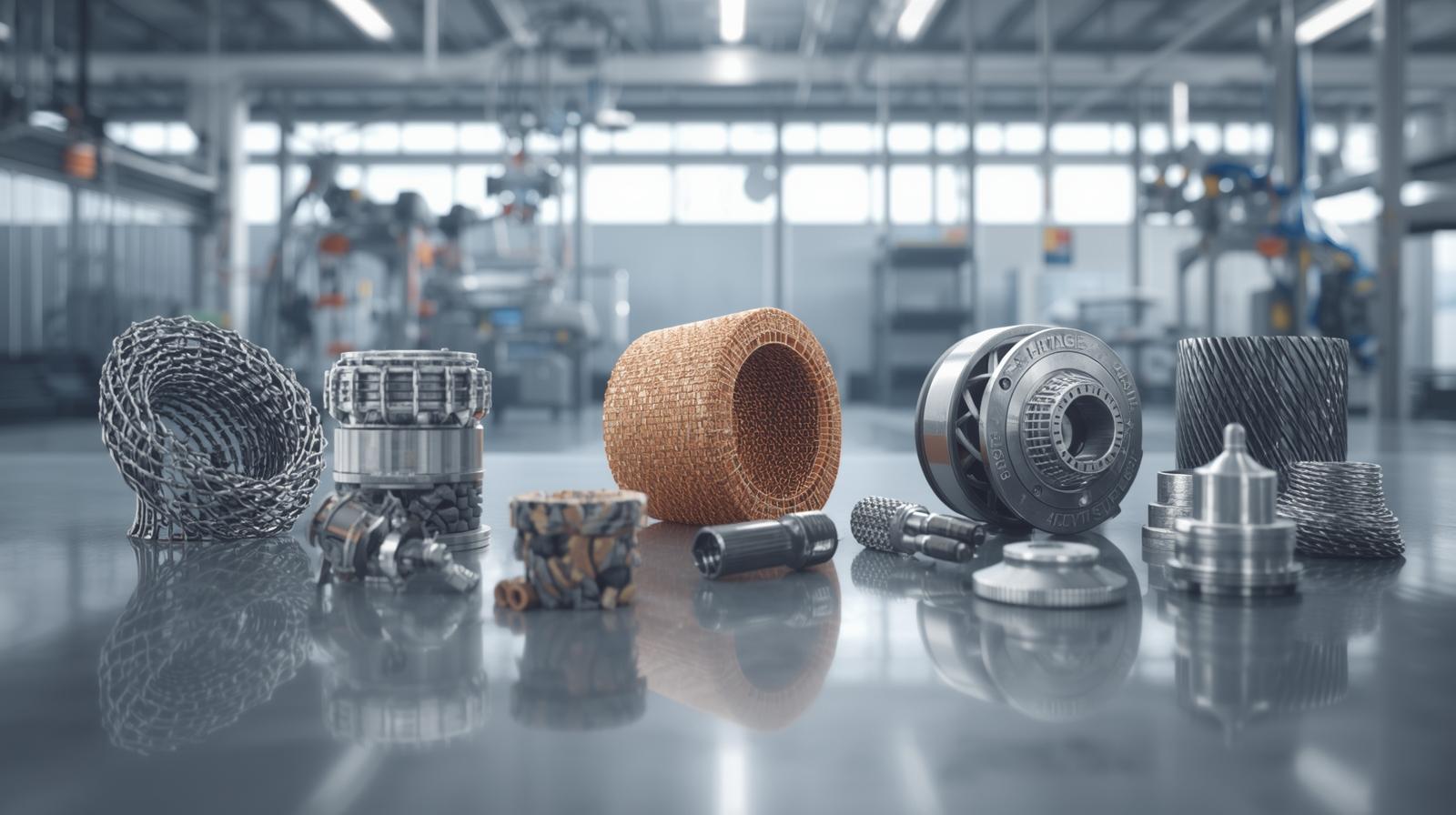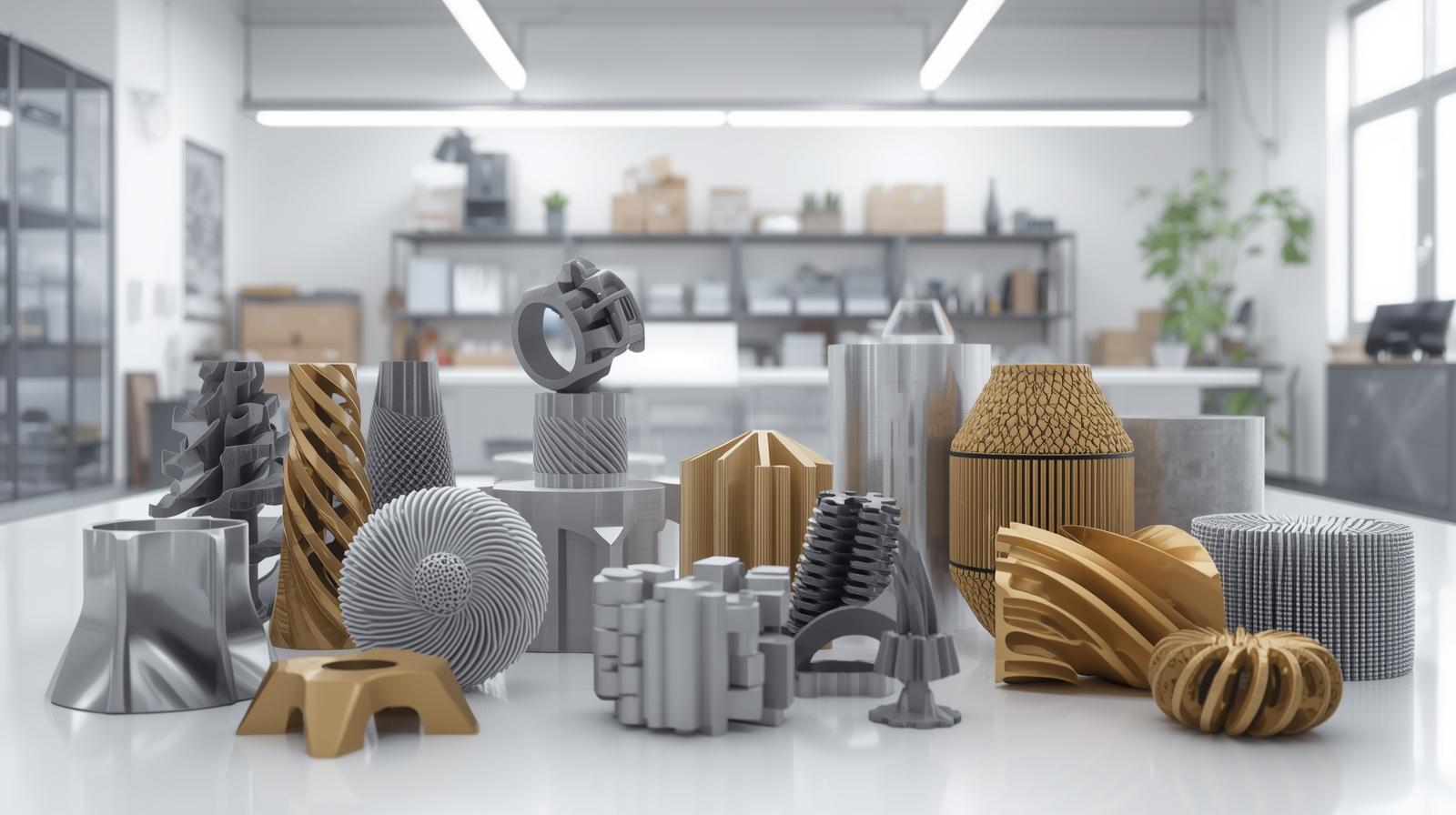The landscape of product development and production is undergoing a seismic shift, driven by the relentless evolution of additive manufacturing. Once confined to simple prototyping and hobbyist projects, 3D printing has matured into a cornerstone of modern industrial strategy. The global 3D printing market trends in prototyping and manufacturing are not just about faster printers or new materials; they represent a fundamental change in how companies conceive, design, and deliver products to the world. This technology is dismantling traditional barriers, enabling unprecedented levels of customization, and fostering a new era of agile, on-demand production. This article provides a detailed exploration of the most impactful 3D printing market trends in prototyping and manufacturing, examining how they are reshaping industries from aerospace to healthcare.
The global 3D printing market size was estimated at USD 15.35 billion in 2024 and is predicted to increase from USD 16.16 billion in 2025 to approximately USD 35.79 billion by 2030, expanding at a CAGR of 17.2% from 2025 to 2030.

From Rapid Prototyping to Agile Manufacturing
The journey of 3D printing began in the realm of rapid prototyping. Its ability to quickly turn a digital model into a physical object revolutionized the design verification process, slashing weeks off development cycles. However, the current 3D printing market trends in prototyping and manufacturing show a clear migration from purely prototyping applications to full-scale, end-use part production. This transition is powered by advancements in printer reliability, material science, and post-processing techniques, making additive manufacturing a viable and often superior alternative to traditional methods like injection molding or CNC machining for specific applications.
Key Trends Revolutionizing Prototyping
The role of 3D printing in prototyping has itself evolved, becoming more sophisticated and integral to the entire product lifecycle.
Hyper-Realistic Prototypes for Form, Fit, and Function
Gone are the days of prototypes being mere visual models. Modern additive manufacturing allows for the creation of hyper-realistic prototypes that accurately test for form, fit, and function. Using advanced materials with properties mimicking final production plastics, metals, and even rubbers, engineers can conduct rigorous functional tests long before committing to expensive tooling. This reduces the risk of design flaws reaching the market and ensures a higher quality final product.
Accelerated Iteration and Design Freedom
The core advantage of rapid prototyping remains its speed. The iterative process of design, print, test, and redesign has been compressed from months to days. This acceleration fosters a culture of innovation and experimentation. Designers are liberated from the constraints of traditional manufacturing, allowing them to create complex geometries, organic shapes, and lightweight lattice structures that were previously impossible or prohibitively expensive to produce. This design freedom is a critical driver behind the ongoing 3D printing market trends in prototyping and manufacturing.
Digital Inventory and On-Demand Spare Parts
A significant trend extending from prototyping into manufacturing is the concept of a digital inventory. Instead of storing vast quantities of physical spare parts for legacy equipment, companies are now storing digital CAD files. When a part is needed, it can be printed on-demand, anywhere in the world. This eliminates storage costs, reduces waste from obsolete parts, and guarantees the availability of spares for decades, fundamentally changing supply chain and logistics models.

Pivotal Trends Driving Manufacturing Adoption
The adoption of 3D printing for direct digital manufacturing is where the most disruptive 3D printing market trends in prototyping and manufacturing are emerging.
Expansion of High-Performance Materials
The material palette for industrial 3D printing has exploded. Beyond standard plastics, manufacturers now have access to a vast array of engineering-grade thermoplastics, composites, and superalloys. The development of flame-retardant polymers, carbon-fiber-reinforced materials, and high-temperature-resistant metals like Inconel and Titanium is unlocking applications in the most demanding sectors, including aerospace, automotive, and medical implants. This material expansion is a primary enabler for the use of 3D printing in manufacturing final, certified components.
Mass Customization at Scale
This is perhaps the most transformative trend. Traditional manufacturing relies on economies of scale, producing millions of identical items to be cost-effective. 3D printing inverts this model, enabling mass customization. Each item can be uniquely tailored without a significant cost penalty or changeover time. This is revolutionizing industries like medical (patient-specific implants, prosthetics, and surgical guides), dental (custom crowns and aligners), and consumer goods (personalized footwear and eyewear).
Hybrid Manufacturing Systems
The industry is moving towards a synergistic approach rather than an “either/or” choice between additive and subtractive methods. Hybrid manufacturing systems integrate 3D printing heads with CNC milling machines into a single platform. This allows a part to be built additively and then finished to high-precision tolerances subtractively in one setup. This trend combines the design freedom of 3D printing with the superior surface finish and accuracy of CNC machining, offering a best-of-both-worlds solution for complex part manufacturing.
Sustainability and Circular Economy
As environmental concerns take center stage, the sustainable advantages of 3D printing are becoming a major market driver. Additive manufacturing is inherently less wasteful than subtractive methods, which can often remove over 90% of a raw material block. 3D printing typically uses only the material necessary to build the part, with support structures often being recyclable. Furthermore, localized production reduces the carbon footprint associated with global shipping and logistics. The ability to repair and refurbish parts through additive processes also contributes to a more circular economy.
Download PDF Brochure @ https://www.marketsandmarkets.com/pdfdownloadNew.asp?id=1276
Industry-Specific Applications and Impact
The convergence of these 3D printing market trends in prototyping and manufacturing is creating tangible value across diverse sectors.
-
Aerospace & Defense: Companies leverage 3D printing to produce lightweight, complex components that reduce aircraft weight, leading to significant fuel savings. They also use it for rapid prototyping of new designs and manufacturing on-demand tooling and ground support equipment.
-
Healthcare & Medical: The sector is a leader in adoption, using 3D printing for pre-surgical planning models, custom surgical guides, patient-specific implants (PSIs) that perfectly match anatomy, and the bioprinting of tissues and organ structures for research.
-
Automotive: From prototyping new concept cars to manufacturing lightweight brackets, ducting, and even end-use parts for high-performance vehicles, automotive giants are integrating additive manufacturing to accelerate innovation and streamline production.
-
Consumer Goods & Electronics: Brands use 3D printing for rapid iteration of product designs, creating custom-fit wearables, and producing low-volume, high-complexity components for electronic devices that would be uneconomical with injection molding.
Challenges and Future Outlook
Despite the rapid progress, the industry still faces hurdles. Challenges include the high initial cost of industrial-grade systems, the need for specialized operator training, achieving consistent and certifiable part quality, and sometimes slower build speeds for very large volumes. However, the trajectory of 3D printing market trends in prototyping and manufacturing points toward solutions. We can expect continued reduction in system costs, further development of automated post-processing, and the rise of AI-powered software for print optimization and failure prediction. The future will see deeper integration with Industry 4.0 frameworks, where 3D printers operate as connected nodes in a smart, decentralized manufacturing ecosystem.
Conclusion
The 3D printing market trends in prototyping and manufacturing clearly illustrate a technology that has come of age. It has successfully transitioned from a niche tool for creating prototypes to a powerful, mainstream manufacturing technology that offers unparalleled design freedom, supply chain resilience, and mass customization capabilities. As materials continue to advance, costs decrease, and integration with traditional systems deepens, additive manufacturing will become an indispensable part of the global manufacturing landscape. Companies that strategically adopt and integrate these trends today will be the industry leaders of tomorrow, poised to innovate faster, operate more efficiently, and meet the evolving demands of the market with agility and precision.
Explore In-Depth Semiconductor & Electronics Market Research
https://www.marketsandmarkets.com/semiconductorand-electonics-market-research-87.html
FAQs
1. What is the biggest trend in 3D printing for manufacturing?
While several trends are significant, the shift towards mass customization and the production of end-use parts is arguably the most transformative. It allows for the economic production of personalized goods and complex, low-volume components that are not feasible with traditional mass production methods.
2. How are 3D printing market trends impacting the speed of prototyping?
Trends like faster printing technologies (e.g., DLP and SLA), high-throughput binder jetting, and AI-driven print preparation are drastically reducing iteration times. What used to take weeks now often takes days or even hours, dramatically accelerating product development cycles and time-to-market.
3. What industries are benefiting the most from these 3D printing trends?
The aerospace, medical and dental, and automotive industries are currently the leading adopters. They benefit immensely from the ability to create lightweight structures, patient-specific implants and devices, and rapidly prototype and manufacture complex, high-performance parts.
4. Are there sustainability benefits to these new 3D printing trends?
Yes, significantly. Key trends promote sustainability through additive rather than subtractive processes (dramatically reducing material waste), localized production (cutting down on shipping emissions), and enabling a digital inventory model that eliminates the waste associated with storing and eventually discarding obsolete physical parts.
5. What is a major challenge still facing the adoption of 3D printing in manufacturing?
A primary challenge is high-volume production speed and cost-effectiveness. For producing millions of identical simple parts, traditional injection molding is still often faster and cheaper. However, 3D printing is continuously closing this gap for complex, customized, and lower-volume production runs.
See The Latest Semiconductor Reports:
Speech and Voice Recognition Market Size, Share & Trends : https://www.marketsandmarkets.com/Market-Reports/speech-voice-recognition-market-202401714.html
Containerized Battery Energy Storage System (BESS) Market Size, Share & Trends: https://www.marketsandmarkets.com/Market-Reports/containerized-battery-energy-storage-system-bess-market-81525510.html
Building Information Modeling Market Size, Share & Trends 2030: https://www.marketsandmarkets.com/Market-Reports/building-information-modeling-market-95037387.html
Precision Aquaculture Market Size, Share & Trends: https://www.marketsandmarkets.com/Market-Reports/precision-aquaculture-market-242307580.html
Intelligent Transportation System Market Size, Share & Trends: https://www.marketsandmarkets.com/Market-Reports/intelligent-transport-systems-its-market-764.html
